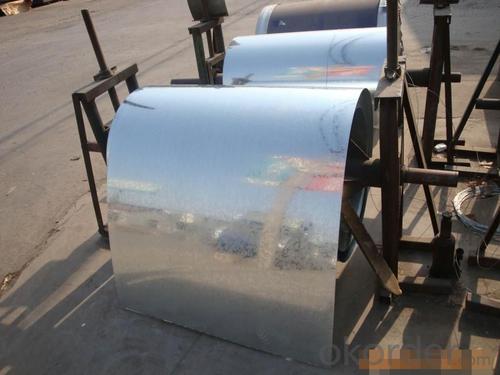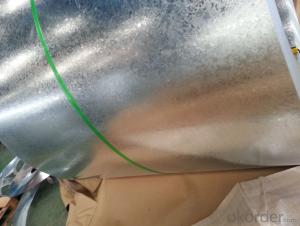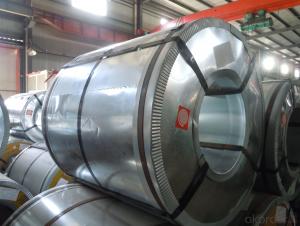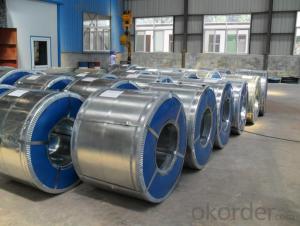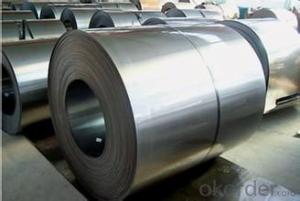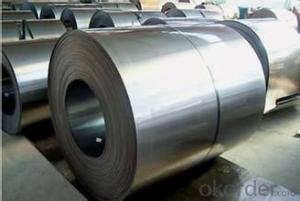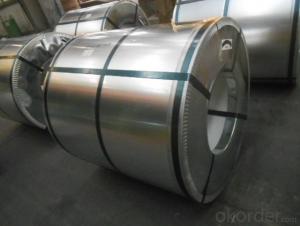Hot Dipped Galvanized Steel Coil----the Largest Producer in China
- Loading Port:
- Shanghai
- Payment Terms:
- TT OR LC
- Min Order Qty:
- 2500 PCS
- Supply Capability:
- 250000 PCS/month
OKorder Service Pledge
OKorder Financial Service
You Might Also Like
Product Description
1.Product Name:Hot dipped galvanized steel coil
2.Hot dipped galvanized steel coil Thickness:0.1mm-2mm
3.Hot dipped galvanized steel coil Width:600mm-1250mm
4.Hot dipped galvanized steel coil Zinc coated:40g-275g
5.Hot dipped galvanized steel coil MOQ:25 tons
Galvanized steel coil features:
Zinc coating :60-220g/m2( as required)
Thickness:0.13-3.0mm
Width:600-1250mm(900mm,1215mm,1250mm,1000mm the most common)
Coil id:508mm
Coil weight: 3-5MT(as required)
Surface:regular/mini/zero spangle, chromated, skin pass, dry etc.
Hot dipped galvanized steel coil Application:
With excellent cold bending molded manufacturablity, good decoration effect, strong anti-corrosion ability, galvanized steel coils and sheets are also pollution-free and easily recycled. Accordingly, they can be used as final products and basic plates of color coated steel coils and widely applied in construction, home appliances, decoration, ect.
Packaging & Delivery
Packaging Detail: export standard: plastic film +water proof paper + steel plate+ packing steel strip
Delivery Detail: about 25 days after a firm order
Product Picture
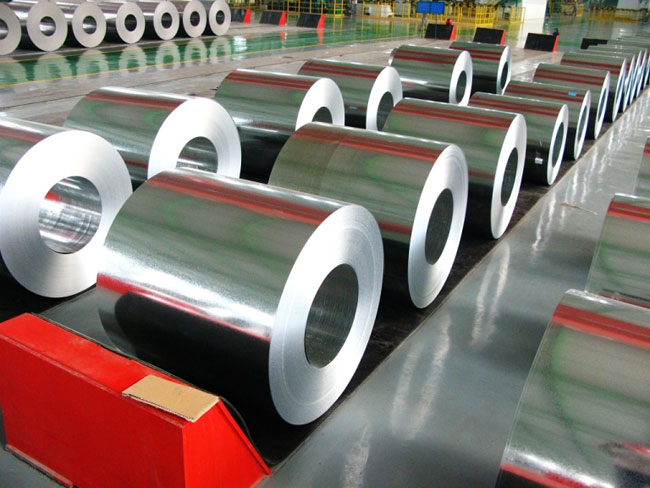
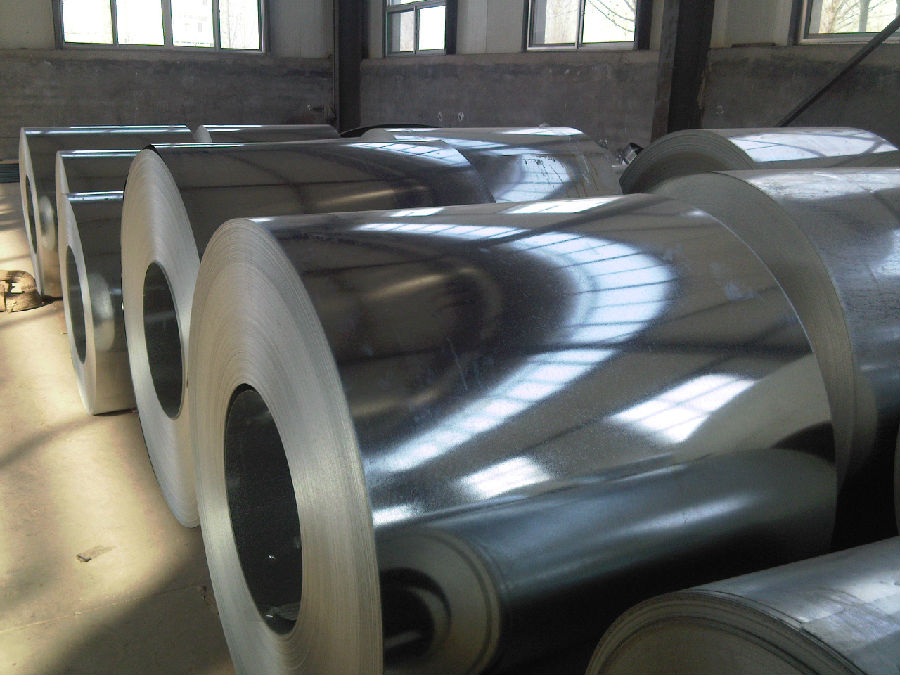

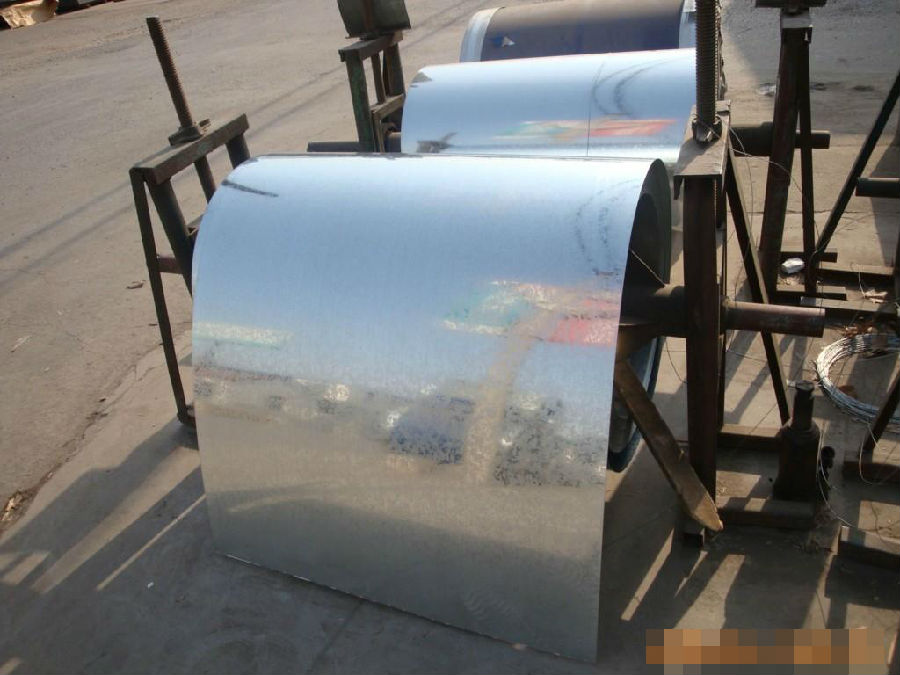
- Q: I live in Dubai. I want to make a damascus steel sword and have no idea where to get the steel or what sort of steel I should get.First to adress the access of my steel...I need to get some low carbon and high carbon steel for the Damascus....what sort of steel is recommended for this? Also where would I be able to get my hands on it (Internet options e.g websites or locations)THANKS
- You okorder
- Q: What are the different types of steel surface finishes for coils?
- There are several types of steel surface finishes for coils, including hot rolled, cold rolled, galvanized, and coated finishes. Each finish offers unique properties and characteristics, such as improved strength, corrosion resistance, or aesthetic appeal. The choice of finish depends on the specific application and desired outcome for the steel coils.
- Q: How does the surface finish of steel coils affect their performance?
- The surface finish of steel coils significantly affects their performance. A smooth and even surface finish enhances the coil's ability to resist corrosion, improves paint adhesion, and enhances the overall appearance of the final product. Additionally, a properly finished surface reduces friction, facilitating better processing and handling during manufacturing. Therefore, the surface finish of steel coils plays a crucial role in determining their durability, functionality, and aesthetic appeal.
- Q: i currently have just steel guitar strings, not a fan they need replacing and i was wondering whats the difference between steel and bronze strings and or nickle strings?
- That depends a lot on what type of music you want to play. Most of the acoustic guitar music you hear on the radio is steel string. That's the bright, sustaining tone most musicians associate with acoustic guitar. Nylon strings give a more muted, mellower tone. Typically this is used for classical playing, although it has been used in popular music very successfully. (Think of Clapton's Tears In Heaven -- the second, lead guitar is a nylon string.) Many people will tell you that a nylon string guitar will be easier to learn on. This is true, but if you go with a classical guitar, with the wider neck and shorter fretboard, you might find some troubles transitioning to the standard longer narrower acoustic fretboard.
- Q: What are the common applications of galvanized steel coils?
- Galvanized steel coils are commonly used in a variety of applications, including construction, automotive manufacturing, electrical appliances, and agricultural equipment. They are particularly useful for roofing and siding materials, as well as for creating durable and corrosion-resistant components in various industries.
- Q: Will a 8mm steel ball fired from a 150lbs crossbow kill small game and if so, from how many yards?
- Despite what Billy Goat says there are Crossbows that fire both Ball bearing and bolts. As for any chance of hitting your target living or paper with and degree of accuracy I doubt your chances. Especially small game. Stick to using quarrels/bolts!
- Q: Can steel coils be recoiled?
- Yes, steel coils can be recoiled. Recoiling involves rewinding a steel coil into a more compact shape, typically to improve storage or transportation efficiency. This process is commonly used in industries such as manufacturing, construction, and transportation.
- Q: How do steel coils contribute to the automotive lightweighting trend?
- Steel coils contribute to the automotive lightweighting trend by providing a strong and lightweight material that can be used to manufacture various components and structures in vehicles. Due to their high strength-to-weight ratio, steel coils allow automakers to reduce the overall weight of the vehicle without compromising on safety or performance. This enables vehicles to achieve better fuel efficiency, lower emissions, and improved handling, all of which are key goals of the lightweighting trend in the automotive industry.
- Q: I wrote in my assignment that mild steel has a high carbon content (4%).This is why it has its strong and rigid properties.. is this correct?
- Steel is defined as an alloy of iron and carbon (often supplemented by further materials) with a carbon content between 0.01 % and 2.06 %. 4% is in the realm of cast iron, which isn't quite as rigid as steel. Mild steel contains 0.16 - 0.29% carbon. You're off by more then a decimal.
- Q: What are the challenges in welding steel coils?
- There are several challenges in welding steel coils that need to be addressed in order to ensure successful and high-quality welds. One of the main challenges is achieving proper joint preparation. Steel coils often have different surface conditions, such as rust, scale, or oil, which need to be cleaned or removed before welding. This requires extensive cleaning and preparation to ensure a clean and sound welding surface. Another challenge is the control of heat input. Steel coils are typically thin, and excessive heat can cause distortion, warping, or even burn-through. Welding operators need to carefully control the heat input to prevent these issues and maintain the integrity of the coils. Moreover, the presence of residual stresses is a significant challenge. Steel coils are often subjected to various stresses during manufacturing, transportation, and handling, which can lead to distortion or cracking during welding. Adequate preheating and post-weld heat treatment may be necessary to relieve these stresses and prevent any potential defects. Ensuring proper weld penetration is also crucial. Steel coils may have varying thicknesses, and achieving consistent and adequate weld penetration throughout the joint can be challenging. Welding operators need to choose the appropriate welding parameters and techniques to ensure complete fusion and a strong bond. Lastly, the size and weight of steel coils can pose logistical challenges during welding. Handling large and heavy coils requires specialized equipment and proper positioning to ensure safe and efficient welding. Additionally, the length of the coils may require multiple passes or continuous welding, which demands skilled operators and precise coordination. Overall, welding steel coils requires careful attention to joint preparation, heat control, stress relief, weld penetration, and logistical considerations. Overcoming these challenges ensures the production of high-quality and durable welded steel coils.
Send your message to us
Hot Dipped Galvanized Steel Coil----the Largest Producer in China
- Loading Port:
- Shanghai
- Payment Terms:
- TT OR LC
- Min Order Qty:
- 2500 PCS
- Supply Capability:
- 250000 PCS/month
OKorder Service Pledge
OKorder Financial Service
Similar products
Hot products
Hot Searches
Related keywords




